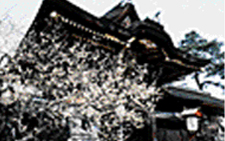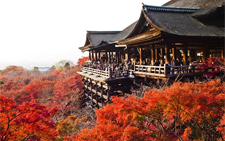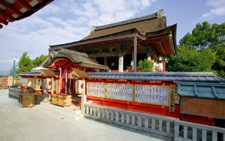Culture & Tourism
Natural View

Kitano-Tenmangu Shrine
Kitano-Tenmangu Shrine, which enshrines Michizane Sugawara, the god of learning, is the main shrine of all 12,000 Tenmangu and Tenjinsha shrines in the country.
- Kagura
- Shinto music and dance are played for visitors who pay a ceremony fee (1000 yen and up ), but visitors are allowed to see it freely. It is performed on the 25th of every month
- The Treasure Hall
- This building was built with the best technology and the design mixing western and Japanese culture in 1927. The shrine houses many treasures, including the National Treasure "Kitano Tenjin Engi Picture Scroll" (Jokyubon), a Matsukaze Ink Stone used habitually by Sugawara Michizane, and other sacred articles and offerings that tell the story of the Tenjin religion that has lasted for over a thousand years.

Kiyomizu-dera Temple
This temple, well-known for "Kiyomizu-no-butai" or "the stage of Kiyomizu," was opened by the saint Enchin in 778. The main hall (a national treasure) with its stage-like-architecture protrudes over a cliff providing a good view of Kyoto City. The temple enjoys a variety of beautiful scenery depending on the season such as cherry blossoms and green leaves in spring and red and yellow leaves in autumn. On the temple grounds are a lot of structures designated as important cultural assets such as Okuno-in and Amida-do.
Kiyomizu-dera Temple http://www.kiyomizudera.or.jp/lang/01.html

Jishu-jinja Shrine
This shrine was built by the third Shogun Tokugawa Iemitsu in 1633. In this building the structures of Irimoya-zukuri and Gongen-zukuri are combined with colorfully painted Japanese cypress bark, and they are designated as
national important cultural assets. The shrine precincts as well as the main hall, the front shrine and the shrine gate are also designated as an important cultural property.
There are a pair of stones in the shrine precinct. People believe their love will be achieved when they can walk from one stone to the other safely with their eyes closed. The shrine is famous for a god of marriage.
KYOTO PREFECTURE TOURISM GUIDE Website http://www.kyoto-kankou.or.jp/